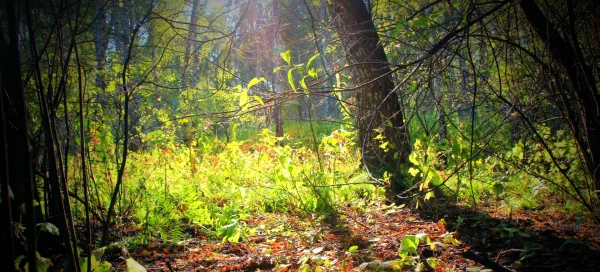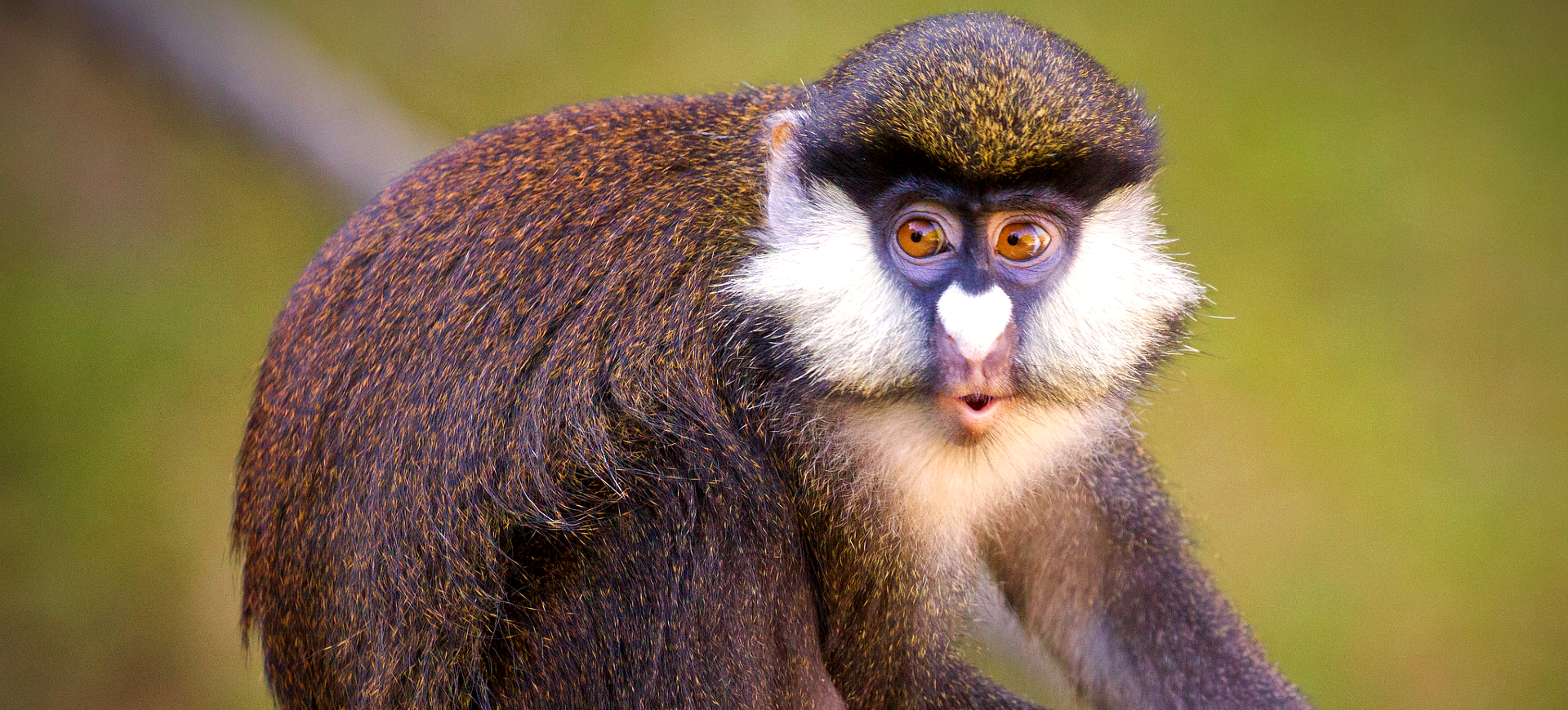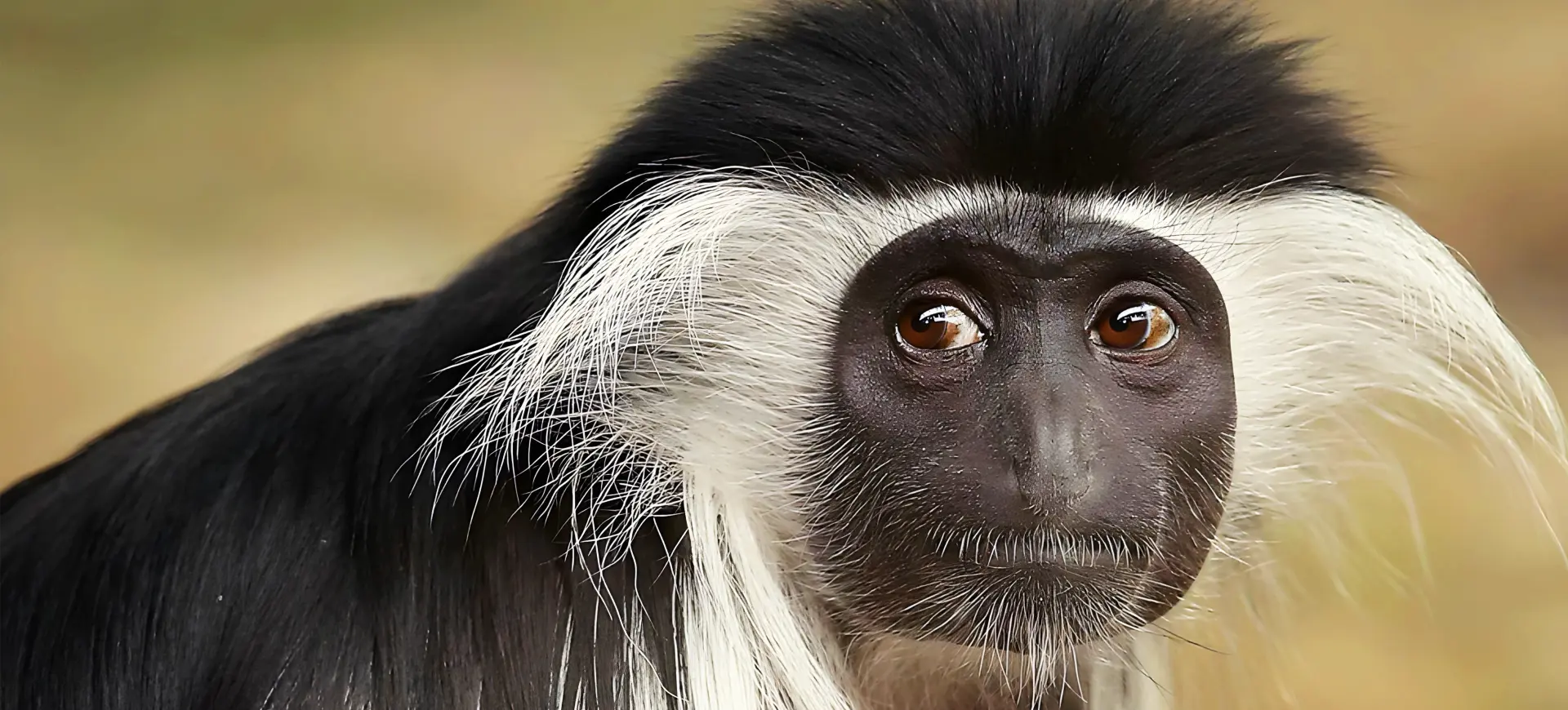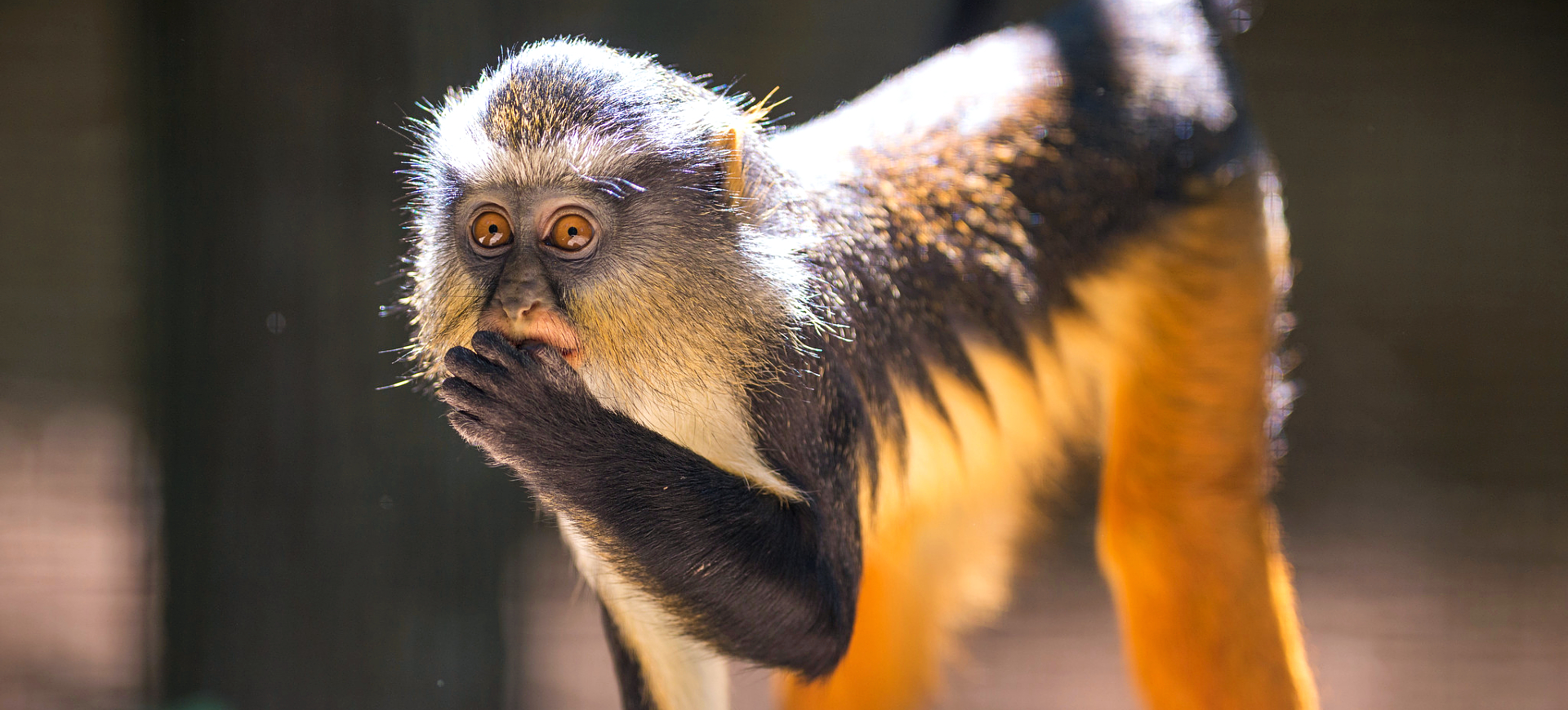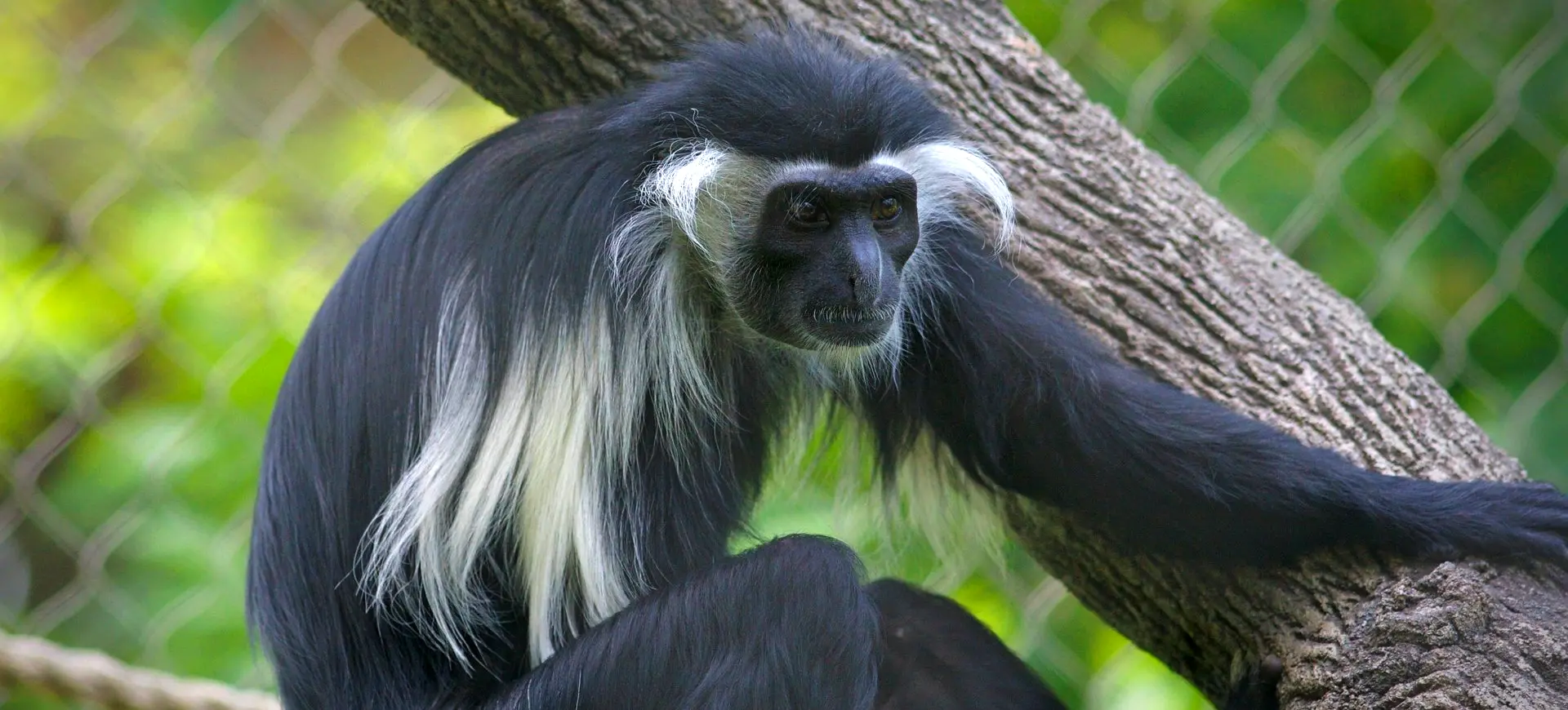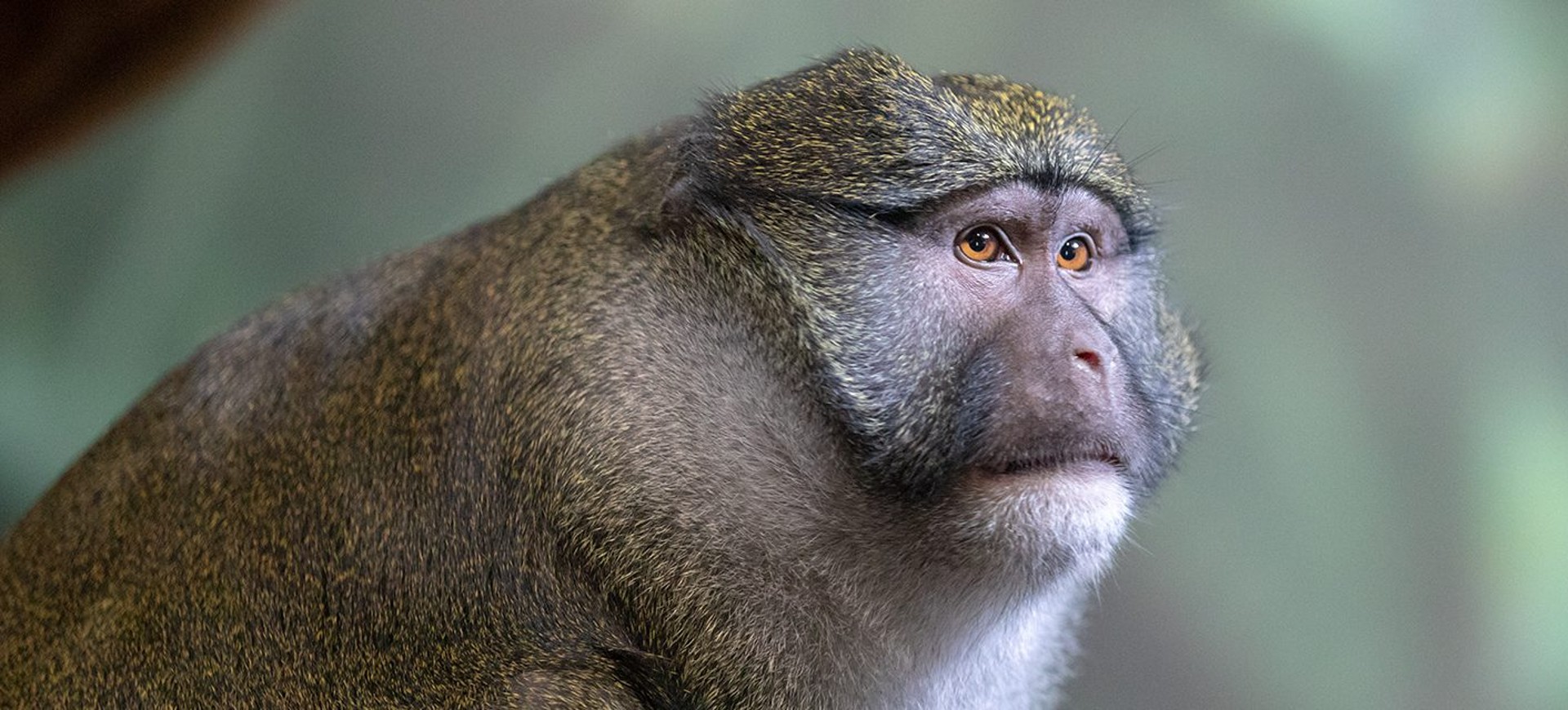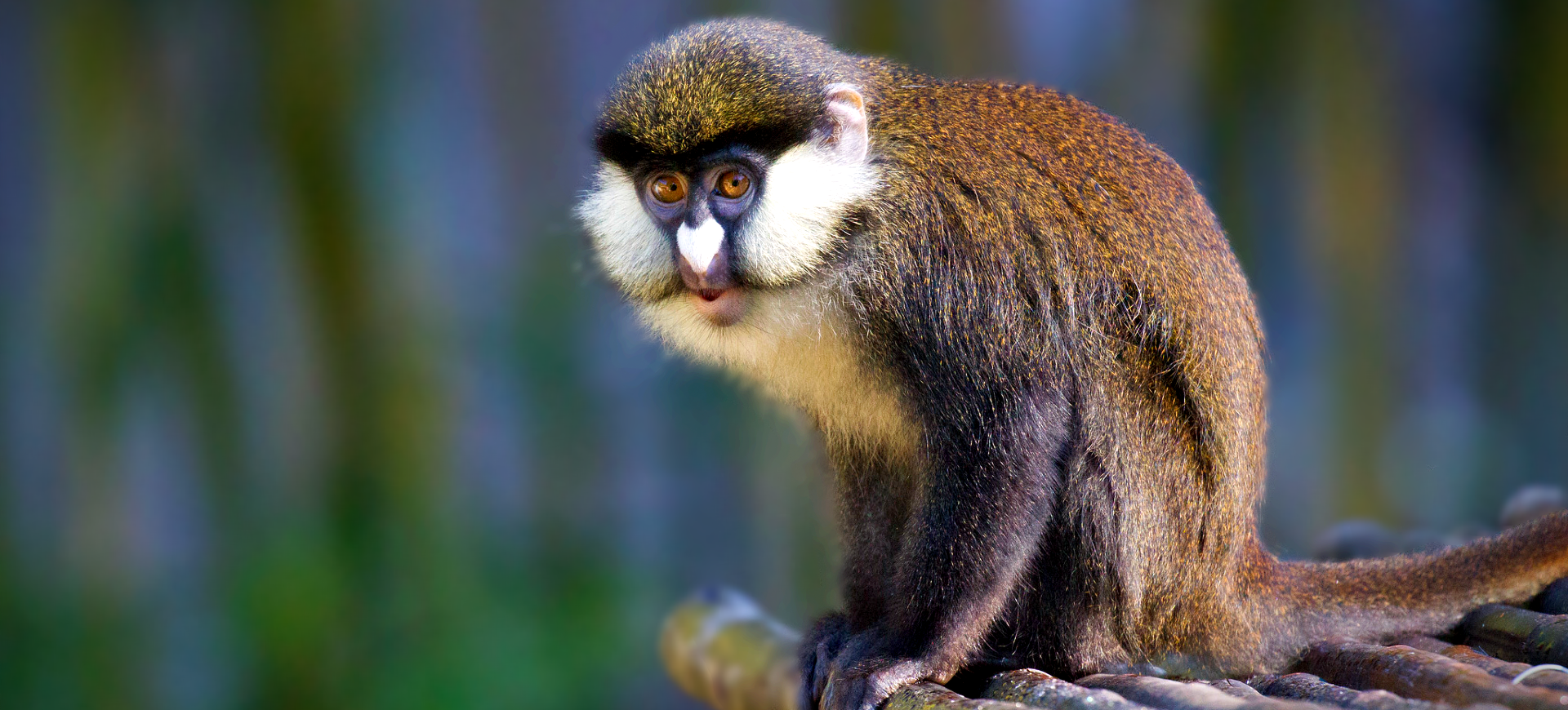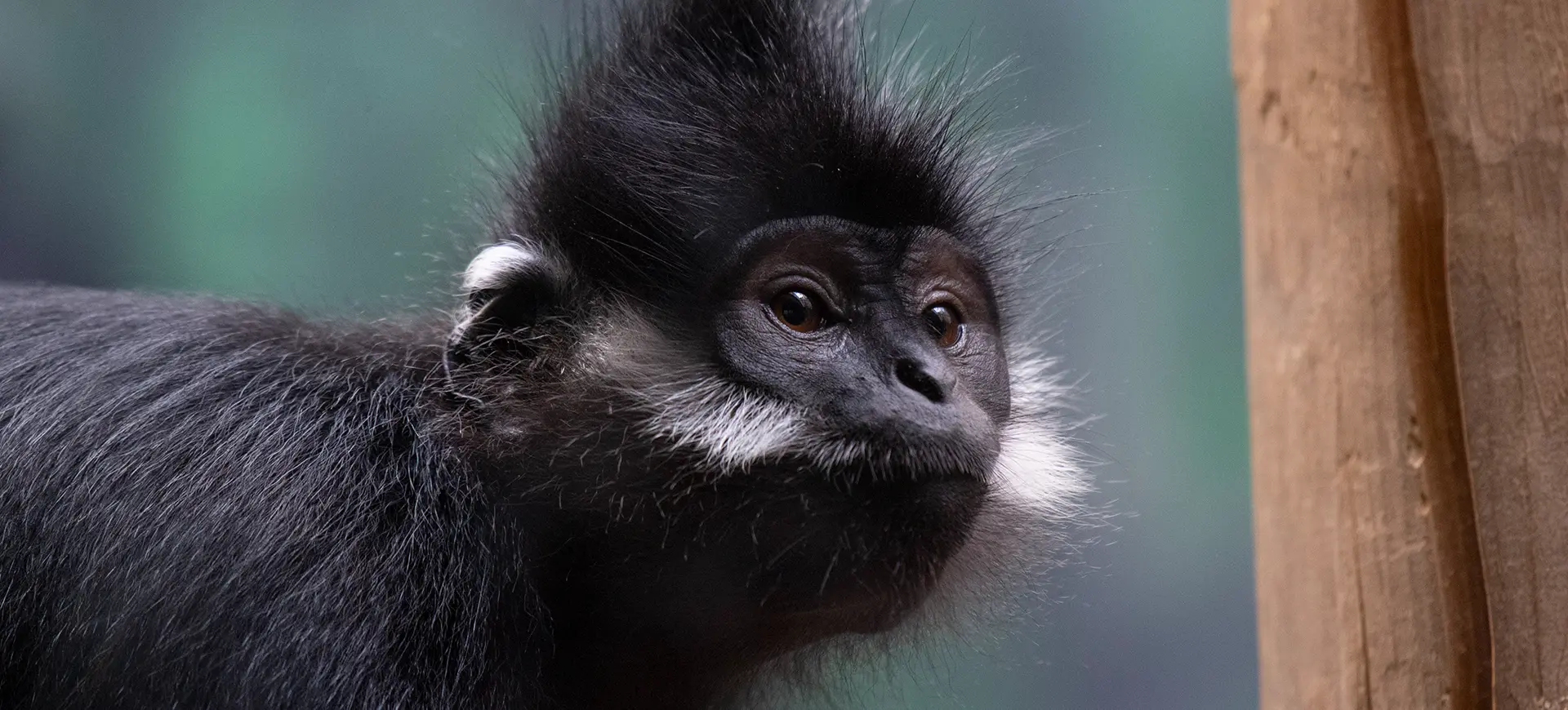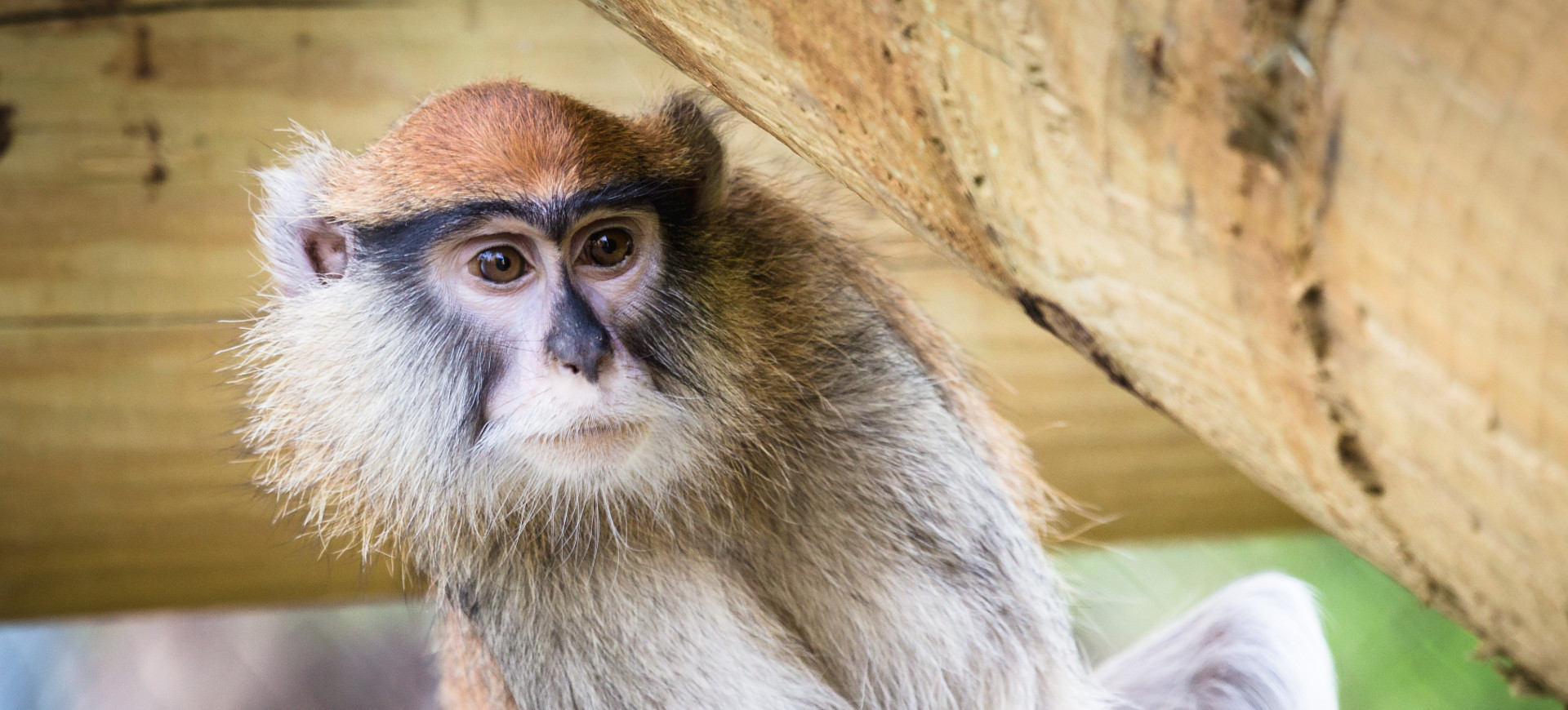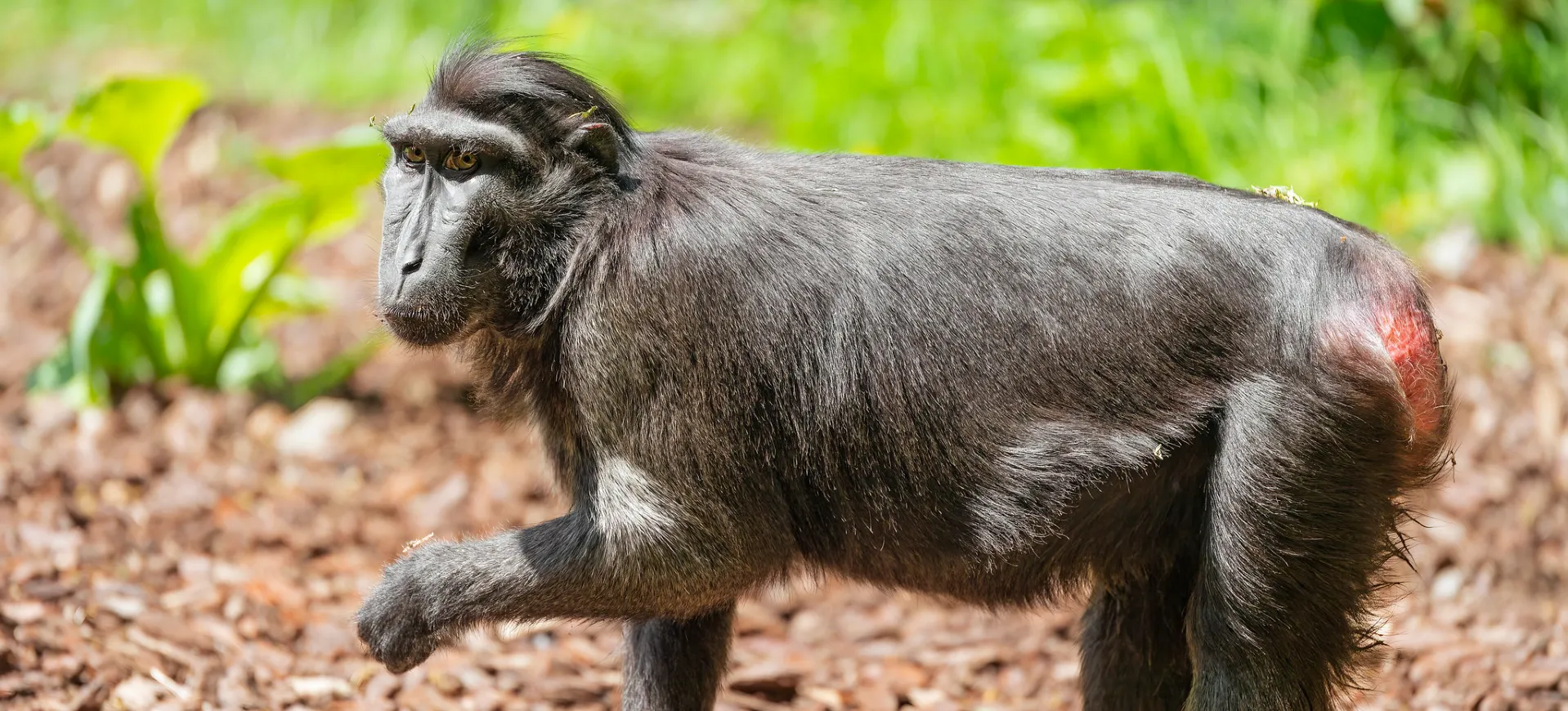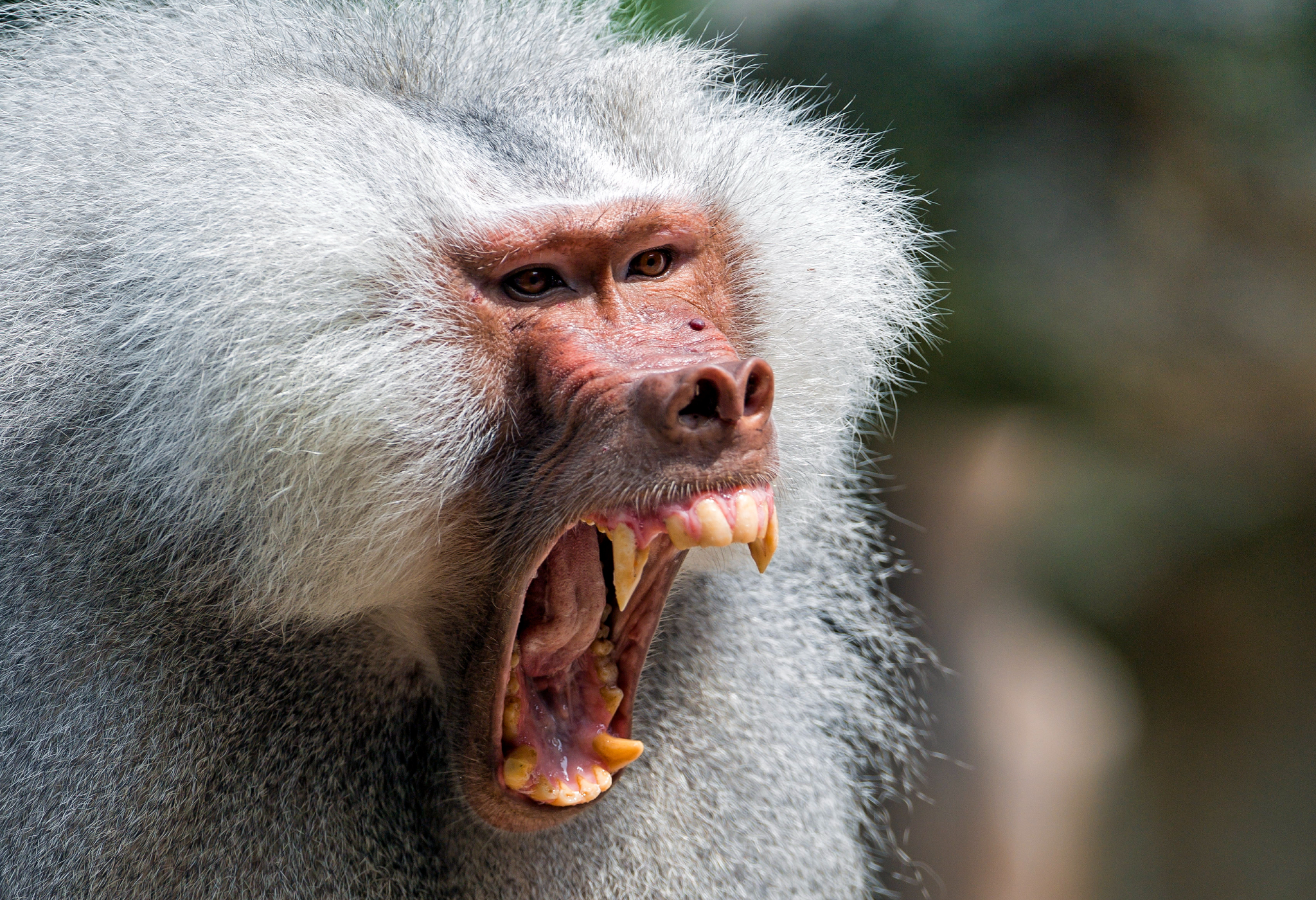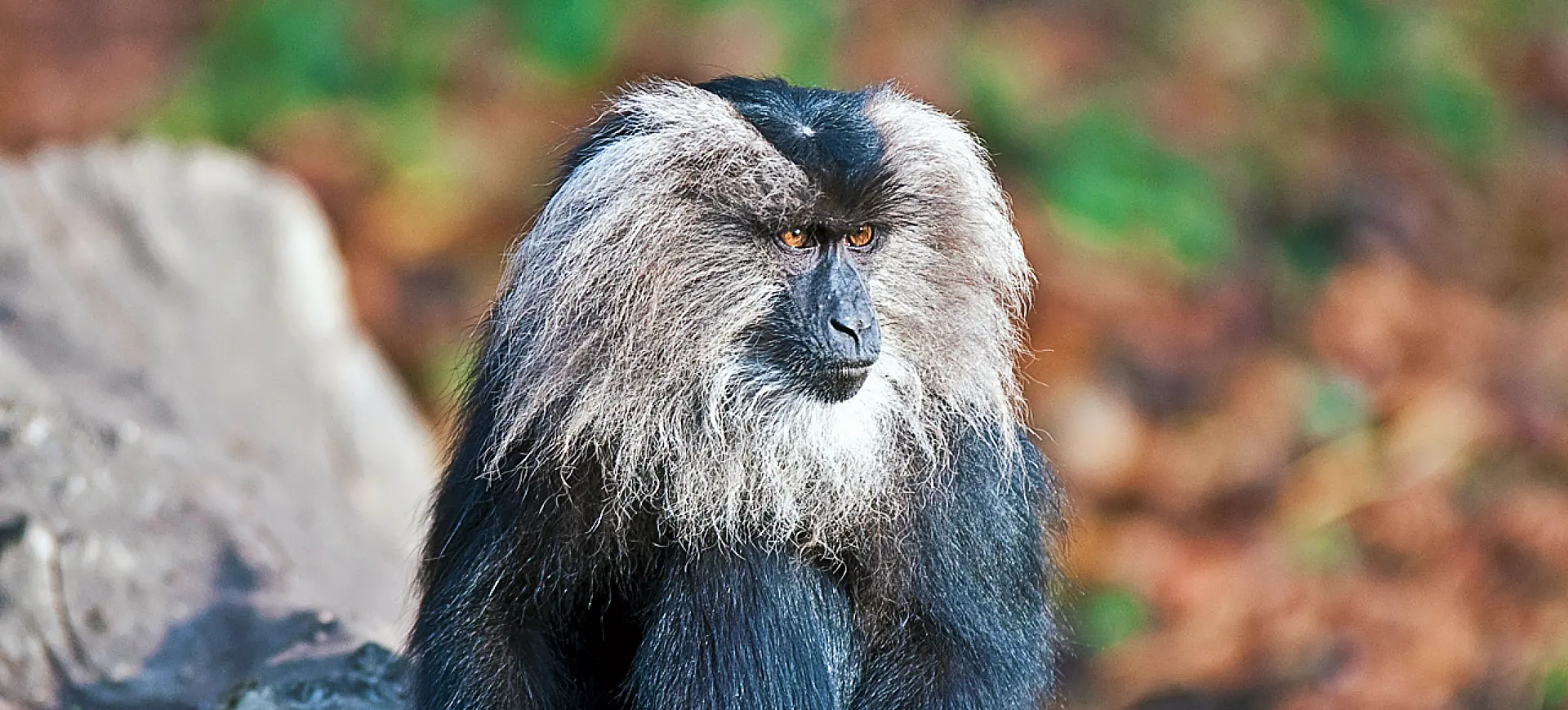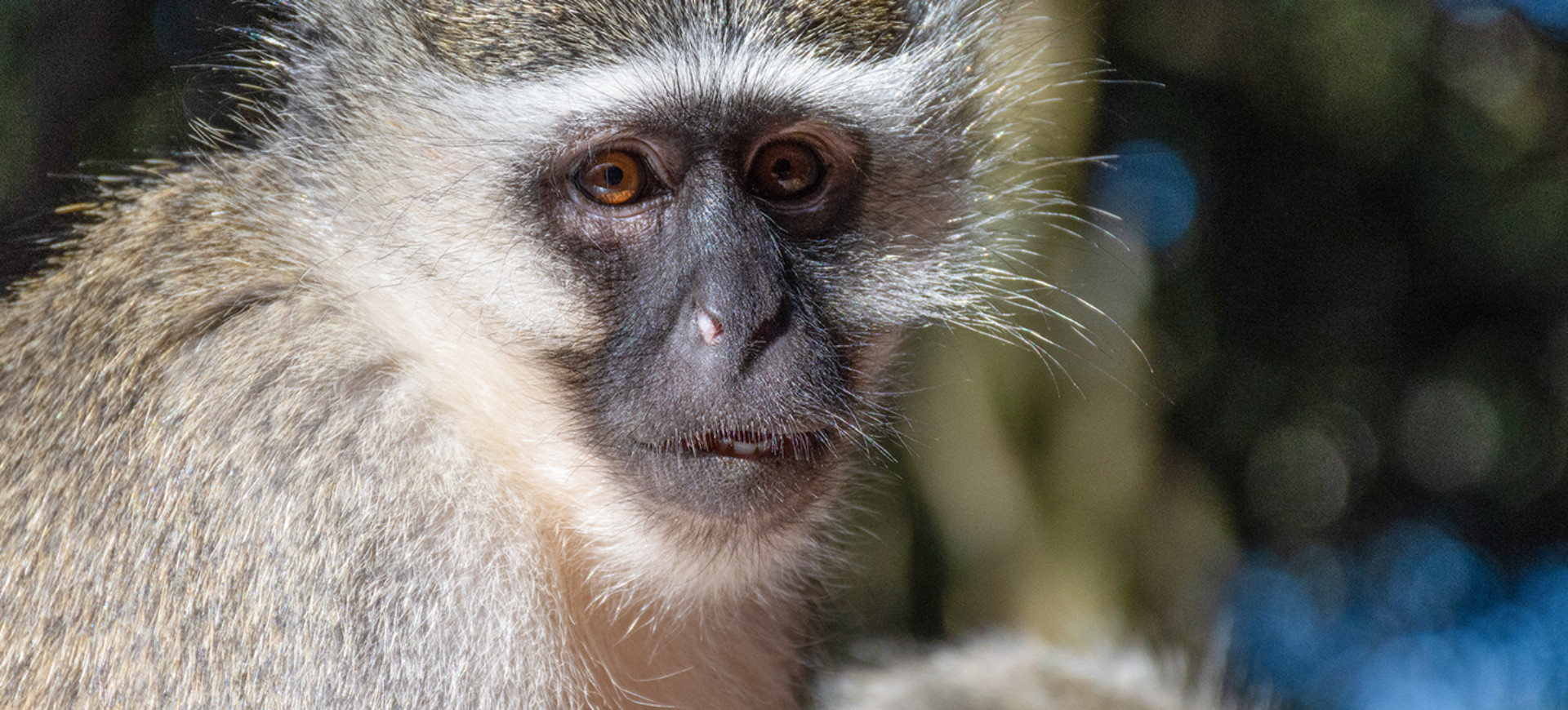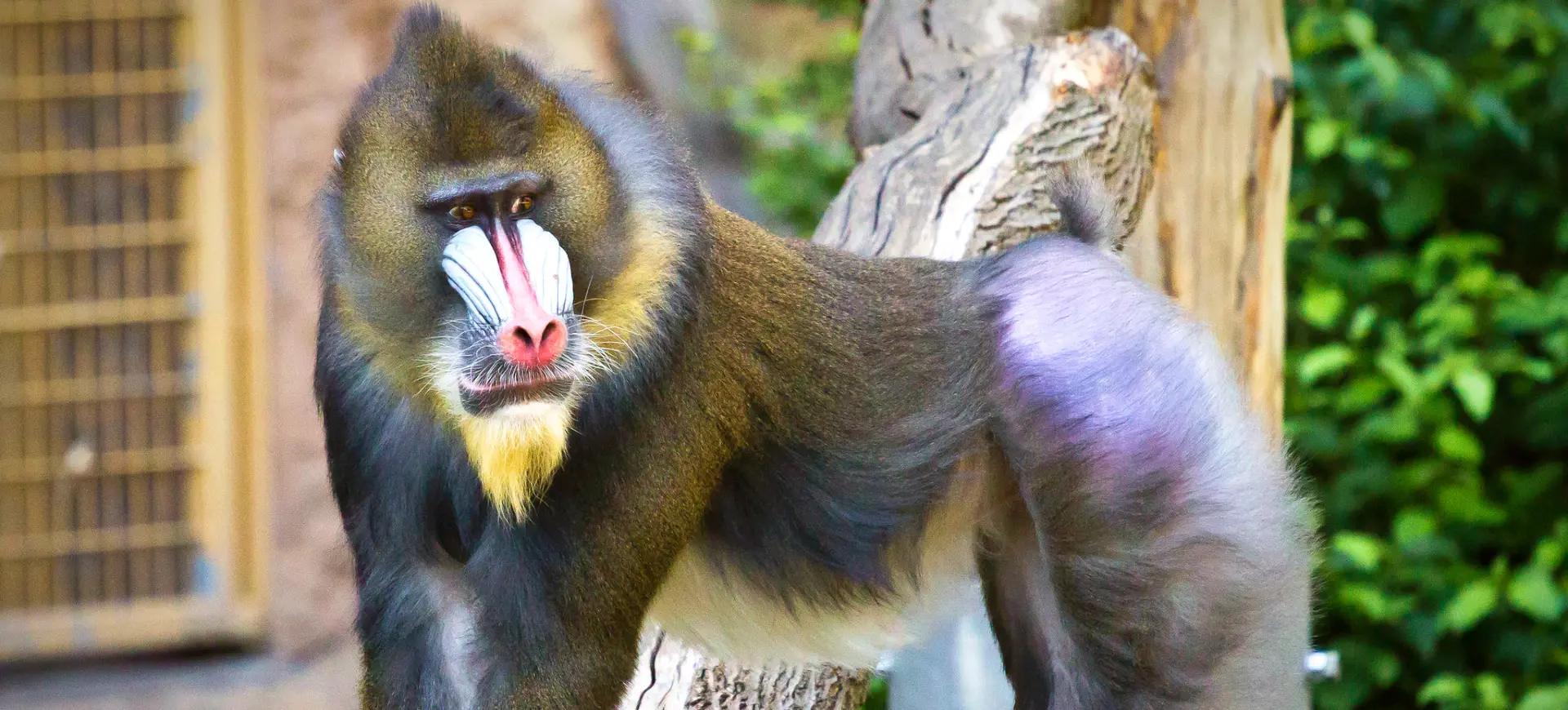Overview
The East Javan Langur, scientifically known as Trachypithecus auratus auratus, is a subspecies of the Javan Lutung found predominantly in the eastern parts of Java Island in Indonesia. These primates are known for their striking appearance, characterized by a predominantly black fur that can vary to a deep orange or reddish-brown in some individuals. They possess a long and prehensile tail, often as long as their body, aiding significantly in their arboreal lifestyle in dense forest canopies. East Javan Langurs are medium-sized primates with a slender build and an elongated face, adaptations that suit their tree-dwelling habits and folivorous diet.
These langurs exhibit slight sexual dimorphism, with males generally larger and more robust than females. Adapted to life in the trees, they have strong limbs and nimble hands and feet, which are crucial for grasping branches and leaves. Their diet mainly consists of leaves, fruits, flowers, and buds, positioning them as important seed dispersers and contributors to the ecological balance of their habitat. East Javan Langurs are also known for their ability to swim, a trait uncommon among many primate species.
Regarding social behavior, East Javan Langurs typically live in troops led by a dominant male. These troops are relatively small, often comprising several females, their offspring, and the leading male. Communication within these groups is maintained through various vocalizations, facial expressions, and body postures, essential for coordinating activities and strengthening social bonds. The social structure within troops provides safety and assists in more efficient foraging, as well as in the care and protection of the young.
Taxonomy
Kingdom
Phylum
Class
Order
Family
Genus
Species
Sub Species
Type
Physical Description:
The East Javan Langur is distinguished by its dense and long fur, which is primarily black but can show variations of deep orange or reddish-brown, especially among females and juveniles. This fur provides insulation and camouflage in their forest environment. The face is surrounded by a mane of longer fur, more pronounced in adult males, adding to their distinctive appearance. Their forward-facing eyes provide excellent depth perception, an essential feature for navigating the forest canopy.
Adults of this subspecies typically reach a body length of about 20 inches (50 cm), with their tail adding length of up to 30 inches (76 cm). The males, being slightly larger, also have more pronounced manes and facial features than females. Their limbs are strong and agile, perfectly adapted for their arboreal lifestyle, with opposable thumbs and toes aiding in climbing and foraging. These physical attributes enable East Javan Langurs to move through the forest canopy easily and efficiently.

Lifespan: Wild: ~20 years || Captivity: ~25 years

Weight: Male: 15-20 lbs (7-9 kg) || Female: 11-15 lbs (5-7 kg)

Length: Male & Female: Body: Approx. 20 inches (50 cm) || Tail: Up to 30 inches (76 cm)
Characteristic:
Native Habitat:
The East Javan Langur is native to the island of Java in Indonesia, specifically the eastern parts of the island. Their preferred habitat includes tropical rainforests and secondary forests, where they find ample food sources and canopy cover. These forests provide them with the necessary environment for their arboreal lifestyle, offering protection from predators and human disturbances. The langurs depend highly on these forested areas, making habitat conservation a critical survival aspect.
The habitat selection by East Javan Langurs is largely influenced by food availability, particularly leaves and fruits. They are seldom found in open or grassland areas, as they require dense canopy cover for foraging and protection. The continuous loss of forest habitat due to logging, agriculture, and expanding human settlements is a significant threat to this subspecies. Efforts to conserve their habitat are crucial for their continued existence in the wild.
Climate Zones:
Biomes:
WWF Biomes:
Biogeographical Realms:
Continents:
Countries:
Diet:
Diet & Feeding Habits:
East Javan Langurs are primarily folivorous, feeding mostly on leaves, which form the bulk of their diet. They consume fruits, flowers, and buds depending on their habitat’s availability. Their complex stomachs are well-adapted to fermenting and digesting the tough cellulose in leaves, allowing them to extract necessary nutrients. This dietary specialization enables them to exploit food resources that many other animals cannot, thereby reducing competition.
Their foraging behavior is predominantly arboreal, utilizing their nimble hands to grasp and manipulate leaves and fruits. They spend a considerable part of their day foraging in the trees, carefully selecting young, tender leaves that are easier to digest and more nutritious. The consumption of various plant parts plays a crucial role in seed dispersal, contributing significantly to the health of their forest ecosystem. Seasonal changes greatly influence their diet as they adapt to the varying availability of different food sources throughout the year.
Mating Behavior:
Mating Description:
The East Javan Langur practices a polygynous mating system, where the dominant male in a troop mates with multiple females. The breeding season is not rigidly defined, often aligning with periods of food abundance. Courtship involves a range of behaviors, including grooming, vocal displays, and physical demonstrations of agility and strength by males to attract females. These behaviors facilitate mating, reinforce the troop’s social bonds, and establish the male’s dominance.
Gestation in East Javan Langurs lasts about six months, typically resulting in the birth of a single offspring. The mother primarily cares for the infant, though other females in the troop may assist. Infants depend on their mothers for several months but start exploring and learning independently as they grow. The protective environment of the troop offers a safe space for young langurs to develop social and survival skills.
Reproduction Season:
Birth Type:
Pregnancy Duration:
Female Name:
Male Name:
Baby Name:
Social Structure Description:
The social structure of the East Javan Langur is characterized by small, cohesive troops typically led by a single dominant male. These groups usually consist of several females, their infants, and occasionally subordinate males. Social interactions within the troop, such as grooming and play, are important for maintaining social bonds and hierarchies. The dominant male plays a crucial role in the protection and leadership of the group, especially in navigating the forest and locating food sources.
Young langurs learn essential life skills within the troop through observation and interaction with adult members. The group provides a supportive environment for the young, offering protection from predators and assistance in food gathering. The troop’s social dynamics significantly influence the langurs’ overall survival and reproductive success. Understanding these social behaviors is important for conservationists in managing and preserving the species in both wild and captive settings.
Groups:
Conservation Status:
Population Trend:
The East Javan Langur is classified as Vulnerable on the IUCN Redlist, primarily due to habitat loss and fragmentation. While they are relatively common in protected areas, the overall population is believed to be decreasing. The exact numbers of East Javan Langurs in the wild are poorly documented, making it challenging to assess the full extent of their decline. Their survival is heavily dependent on preserving their natural habitats and maintaining ecological balance in their forest ecosystems.
Conservation strategies for the East Javan Langur include protecting existing forest habitats and restoring degraded areas. Initiatives to create wildlife corridors are vital to enhance genetic diversity and population connectivity. Education and awareness programs aimed at local communities help reduce poaching and the illegal pet trade. Collaborative conservation efforts involving local communities, governments, and international organizations are essential for effectively conserving this subspecies.
Population Threats:
The primary threat to the East Javan Langur is habitat loss due to deforestation, agricultural expansion, and urban development. This habitat destruction leads to the fragmentation of their populations, isolating groups and reducing genetic diversity. Additionally, hunting for bushmeat and capture for the illegal pet trade pose significant risks in some areas. Climate change also presents a long-term threat by potentially altering their forest habitats and food sources.
To mitigate these threats, enforcing anti-poaching laws, regulating land use, and promoting sustainable forestry practices is crucial. Community-based conservation projects can effectively involve local populations in protecting these langurs and their habitats. Addressing the root causes of habitat destruction and implementing comprehensive conservation plans are necessary for the long-term survival of the East Javan Langur.
Conservation Efforts:
Conservation efforts for the East Javan Langur focus on habitat preservation, managing protected areas, and creating wildlife corridors. Efforts to minimize habitat destruction in key areas and promote sustainable land use practices are crucial. Anti-poaching patrols and law enforcement are important in areas where hunting and the pet trade threaten the langurs. Additionally, breeding programs in captivity play a role in maintaining genetic diversity and potentially supporting future reintroduction programs.
Community involvement in conservation is key, especially in regions where human activities impact the langurs’ habitat. Educational programs that raise awareness about the importance of the East Javan Langur and its role in the ecosystem are also vital. Sustainable land use and habitat restoration projects are part of broader conservation strategies to support the subspecies. These combined efforts are crucial to ensure the continued survival of the East Javan Langur in its natural habitat.
Additional Resources:
Fun Facts
- East Javan Langurs have complex stomachs adapted for fermenting tough plant materials, a necessity given their folivorous diet.
- Infants of this subspecies are often born with bright orange fur, which changes to black as they mature.
- They are known for their agility and grace in the forest canopy, moving effortlessly from tree to tree.
- The vocalizations of East Javan Langurs are varied and are used for communication within the troop, especially for alerting others of potential dangers.
- These langurs play a crucial ecological role in their habitat, acting as seed dispersers and helping to maintain the health of the forest.
- In Javanese folklore, langurs are often depicted as wise and intelligent creatures, reflecting the local community’s respect for these primates.
- East Javan Langurs exhibit high parental care, with mothers and other troop members nurturing and protecting the young.
- The species’ preference for high-canopy living helps them avoid many ground-based predators.
- Conservation efforts for the East Javan Langur are vital, not only for the species itself but also for preserving the diverse ecosystems they inhabit.
- Despite their Vulnerable status, East Javan Langurs exhibit resilience and adaptability, offering hope for their continued survival with effective conservation measures.


